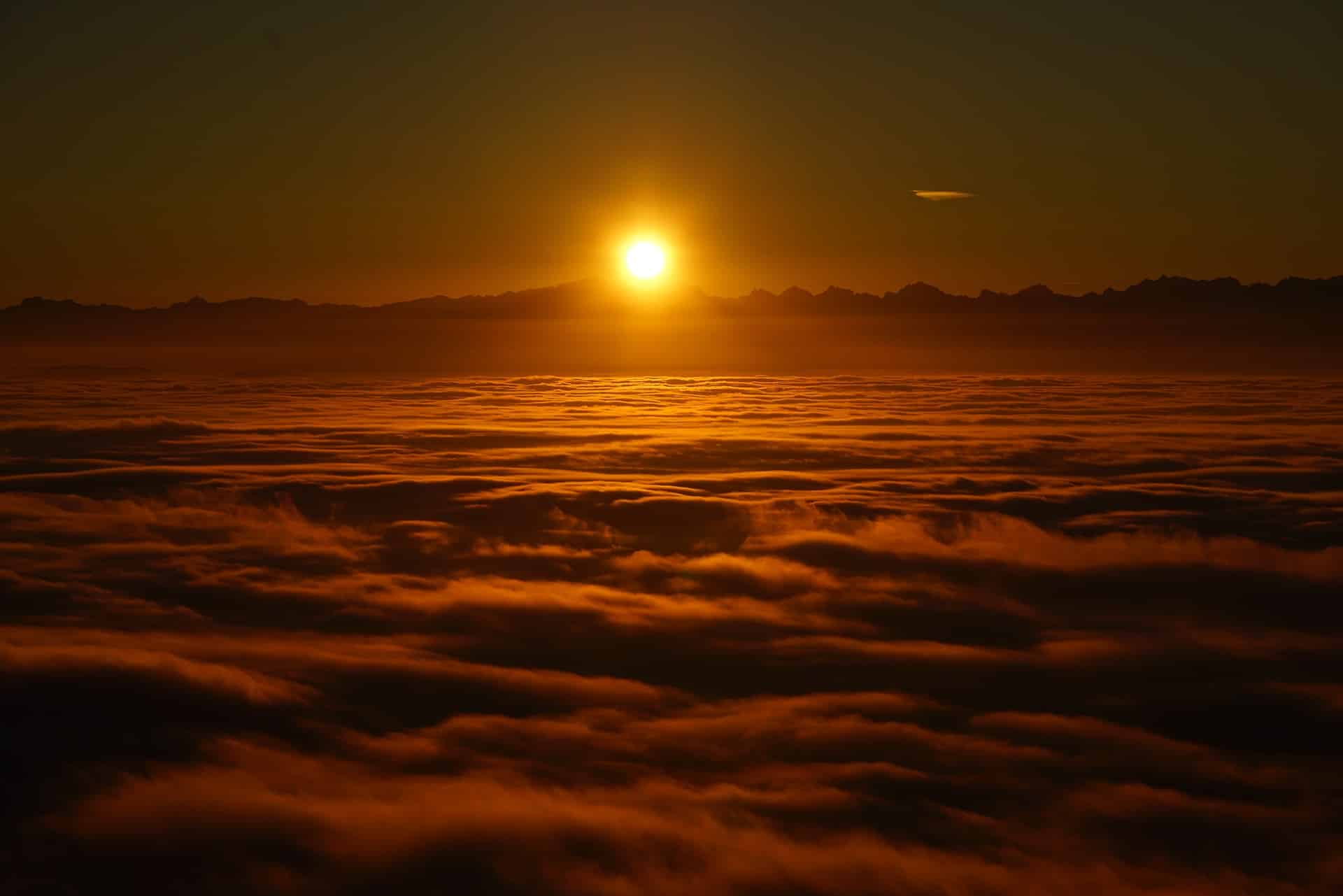
Have you ever looked up at the sky and wondered why the clouds up above don’t fall? Don’t worry, there are no stupid questions here. These fluffy masses of water droplets and ice crystals seem like they should come crashing down to the ground, but they remain suspended high above us. The answer to this mystery lies in the physics of the atmosphere, and it’s a fascinating story that involves everything from temperature and pressure to the properties of water molecules.
The birth of a cloud: how water molecules come together

Before we dive into why clouds don’t fall, let’s first take a closer look at how they form in the first place. Clouds are born when water molecules in the air come together to form tiny droplets or ice crystals. This process is called condensation, and it occurs when warm, moist air rises and cools, causing the water vapor to condense into visible water droplets. For this to happen, the parcel of air must be saturated, i.e. unable to hold all the water it contains in vapor form, so it starts to condense into a liquid or solid form.
The temperature at which condensation occurs depends on the amount of moisture in the air. If the air is very humid, condensation can occur at a higher temperature than if the air is dry. This is why you often see clouds forming on hot, humid days.
Condensation happens with the help of tiny particles floating around in the air, such as dust, salt crystals from sea spray, bacteria, or even ash from volcanoes.
Once the water droplets or ice crystals have formed, they begin to grow larger as they collide with one another. Eventually, they become large enough to be visible to the naked eye, and a cloud is born.
Why clouds stay afloat
Clouds are made of both air and water crystals, which together should be denser than air. Yet, clouds seemingly float, defying gravity, even though denser objects should sink. Moreover, some clouds can get really, really heavy. A modest-sized cloud, say about one kilometer in diameter, has the same mass as a B-747 jumbo jet.
But if that’s the case, why aren’t clouds falling? That’s because they technically do sink into the surrounding air — it’s just that they do so at such a small rate that for all practical intents and purposes, they float.
All the way back in the 16th century, Galileo Galilei showed that all objects free fall at the same rate regardless of their mass — but only in a vacuum. While the force of gravity is pushing down on an object, forcing it to fall towards its surface, the air particles it collides with on the way down also exert a force in the opposite direction. This is known as air resistance or “drag”.
Air resistance is massively affected by the shape of the object. The more streamlined an object, the less air resistance. That’s why fighter jets are as narrow as possible. Conversely, the same principles explain why a skydiver can safely touch down with the help of a parachute, which distributes mass over a large surface area. Since a cloud is so spread out over a large area, its air resistance is huge.
And besides air resistance, there’s another force that is propping up clouds: the convection of air that creates an upward force.
This upward force is created by the temperature and pressure gradients within the atmosphere. As air rises, it cools, causing the water vapor to condense into visible droplets or ice crystals. This releases heat into the surrounding air, which causes it to become warmer and less dense than the air around it. This warm, less dense air rises, creating an upward force that helps to keep the cloud aloft by negating the slight fall velocity of the cloud. What’s more, the condensation of rising air contributes to the survival and growth of the cloud by adding new water vapor.
So, whilst clouds contain a lot of water crystals and droplets that are technically denser than the surrounding air, this water is spread so thin for miles that the effect of gravity becomes negligible. Additionally, if there’s a powerful updraft, the cloud can retain altitude virtually indefinitely until it dissipates due to temperature increasing, the cloud mixing with drier air, or when the entire air front sinks with the cloud.






